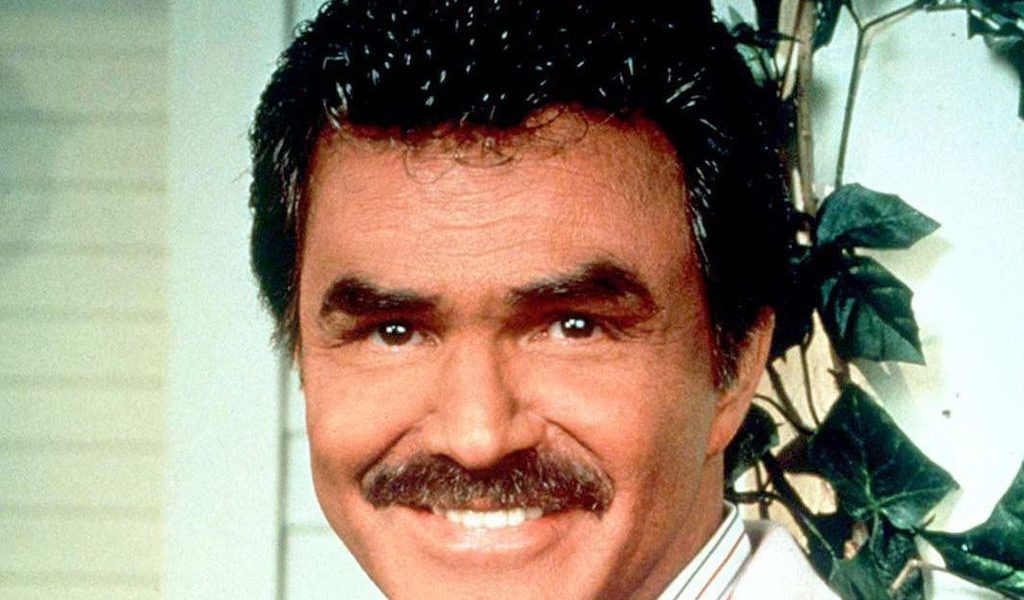Era-defining Movie Star Dead at 82.
Justin Mory
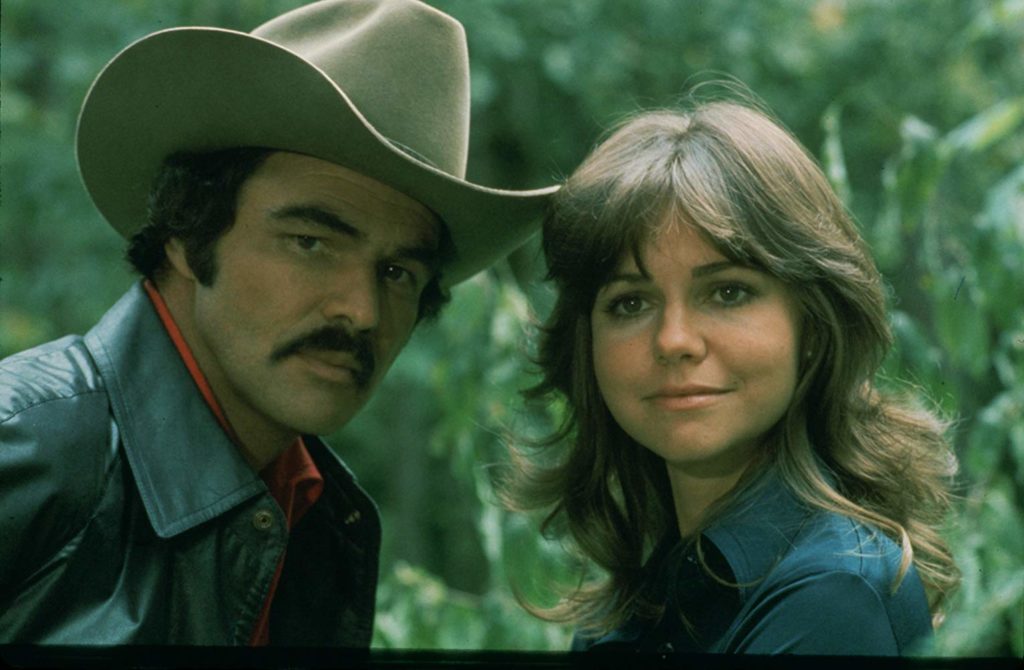
Reynolds and Sally Field in SMOKEY AND THE BANDIT (1977).
Earlier this year, I watched Smokey and the Bandit for the first time for a list of films made in my birth year and, despite having avoided it all the years I was alive, found it outside of Saturday Night Fever the most purely and ridiculously entertaining movie of that year. If a star could effortlessly ride away with the fast-cruising charm of his semi-rig and top-down convertible, that film banditry came courtesy of Burt Reynolds in his cowboy-hat, long boots-wearing, and full-mustachioed prime.
Besides the obvious Deliverance and The Longest Yard, I had found him most enjoyable in some of his atypical efforts like At Long Last Love, Nickelodeon (both for director Peter Bogdanovich, who showcased his talent for lighter and more sophisticated fare), and much later the marvelous late ’80s character piece from Scottish director Bill Forsyth Breaking In, where he plays an aging thief. He had always commanded full screen authority, but in the latter, quirky comedy-drama, where he mentors a younger thief with the wisdom and experience of hard-lived years, he brought a mature gravitas that served him well in later roles.

A final mention should be reserved here for his equally and characteristically charming TV series Evening Shade, which I fondly remember watching during its four season run. With a great supporting cast including Hal Holbrook, Charles Durning, Ossie Davis, Elizabeth Ashley, Michael Jeter, and Marilu Henner, Burt’s return to the medium that gave him his start in the 1950s and 60s was mirrored in his character’s return from the world of professional football to the coaching of his former high school’s team in his Arkansas hometown of the title. In tone and setting it felt like an updating of The Andy Griffith Show to a young me and, like the generous Andy Griffith persona of the classic show, allowed other actors the spotlight on Burt’s own starring sitcom. True star power often comes from an intrinsic understanding of solid and understated screen presence; Burt Reynolds’ was truly an anchor worthy of any acting medium.
Paul Hibbard
When I first watched Boogie Nights, I was around eighteen years old. I had just began exploring better films, a path that was started by Quentin Tarantino by excelled by Paul Thomas Anderson. I had no idea what to expect when I watched it the first time, but it definitely wasn’t what I experienced.
Boogie Nights is filled with such a great cast. They were, to me, virtually unknown, though to more astute film-watchers at the time, they were relatively known up-and-comers. Mark Walhlberg I was aware of primarily for his rap videos on MTV and the melodramatic but still weirdly respectable teen horror film Fear. But there was another actor who loomed over the whole project. Burt Reynolds.
Yesterday, after hearing about the death, I got past my more knee-jerk thoughts and really started to appreciate how great Reynolds was in the film.
I more knew him at the time by name only. As a kid, he was a mustached, good-looking actor, but didn’t know his credentials from say Tom Selleck, who I mixed him up with often. I didn’t end up seeing Deliverance or Smokey and the Bandit until years later.
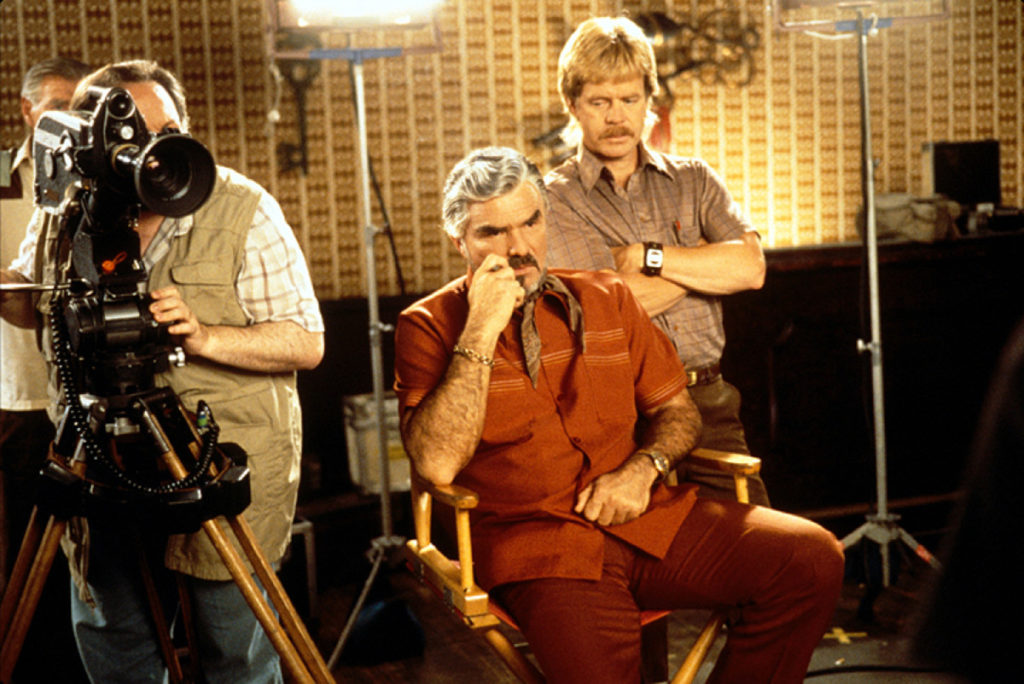
Reynolds as Jack Horner in BOOGIE NIGHTS (1997).
As Jack Horner, Reynolds was a force. Both in a film that needed a character to be a center of strength and experience, but also as an actor leading all this young talent, Reynolds was perfect in both roles. Boogie Nights is a film that captures both the free-loving, drug-filled fun of the porn industry along with the nasty dark side of that world. Reynold’s performance goes back and forth and matches the heights in either direction.
Full disclosure: I was not the biggest fan of Burt Reynolds as a person. He feuded with director PT Anderson on set. He ridiculed and mocked the director for being young and pretentious (both of which are somewhat true) and he has since publicly stated his disdain for both the film and the director. As an acolyte of Anderson, I took the director’s side through it all. I almost disassociated the film from Reynolds. I came to the idea that movie didn’t need him and Anderson did Reynolds the favor by putting him in the movie, not the elder actor doing a young director a favor.
Yesterday, after hearing about the death, I got past my more knee-jerk thoughts and really started to appreciate how great Reynolds was in the film. How he may not have cared about the film, but he still gave a magnetic performance. I thought how it was almost a credit to his talent that he could be such a presence and deliver something so powerful in a film his heart wasn’t completely into. How much charm and charisma and talent he has despite himself.
Burt Reynolds was an icon and touched many with his 70s movies. To me, he’ll always be a huge part of my life because of his performance as Jack Horner. RIP
Jim Tudor
Other former children of the 1970s may relate to the notion of the ubiquitous celebrity. Across media, there were certain faces that always seemed to be present. Paul Williams, Crystal Gayle, Doug Henning. Being slightly too young to fully discern the difference between The Tonight Show, The Muppet Show, Bob Hope specials or actual movies that would air on the tube, these were the people that, for whatever reasons, reliably occupied our screens.
Reynolds, besides being a fun cock-of-the-walk, was a real talent; an authentic movie star in his time.
Burt Reynolds, while undeniably a part of this culture, was always presented as a bigger deal. He was not quite as ubiquitous, and for a kid, never seemed quite as funny. But he was someone that the funny people loved to be with- and that counted for a lot. Whether palling with Dom DeLuise or filling in for Johnny Carson, time with Reynolds had a way of culminating in red-faced, tear-inducing laughter. I never quite knew what was so funny, and I’ve never gone back and checked. But it didn’t matter. What kid wouldn’t want to be around that much fun??
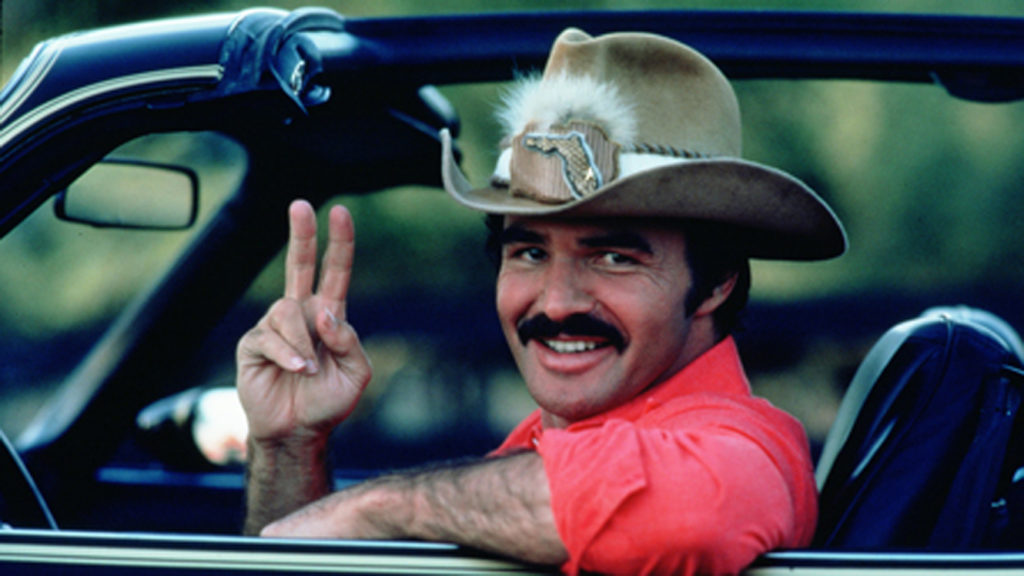
SMOKEY AND THE BANDIT II (1980).
I guess I learned enough about Smokey and the Bandit from all those TV appearances, so that by the time I sat down as a kid to watch its sequel during a drop-everything “Movie of the Week” airing, I felt well-versed. Apparently Smokey and the Bandit II is a hot mess of smelly burnt rubber; the worst kind of pandering sequel. But don’t tell that to my elementry school-aged self. The Bandit and his buds racing across country with a suspended pregnant elephant in the back of Jerry Reed’s big rig was nothing short of a true laugh riot.
By then, I’d figured out that Reynolds was a movie star. And not just a movie star, but the biggest movie star. (Which he was… until he wasn’t). Reynolds didn’t stay that in demand, not by a long shot. But he did continue making movies, though they were rarely any good. By the 1990s, Burt Reynolds seemed like a footnote, a name one would drop when mocking the seventies. (“Which is better, Burt Reynolds’ Heat or Michael Mann’s Heat?”, a hip college paper smirkingly asked in early 1996). Though he did his generous share of directing, I couldn’t tell you anything about how he fared in the position. Reynolds had become a hat, a mustache, a red shirt, a hairpiece, a Trans-Am, a memory. He’d seemed to age into this isolated swaggerer who mumbled and didn’t care about anything. And, maybe he didn’t. Which is why even now, Norm Macdonald’s impersonation of him on SNL’s “Celebrity Jeopardy” remains hilarious. By the time that Paul Thomas Anderson cast him in 1997’s Boogie Nights, Reynolds was the only one on the planet that didn’t grasp the magnitude of the opportunity, nor how good he was in that role. Amid his cringe-inducing badmouthing of the part, he was granted an Oscar nomination for his trouble.
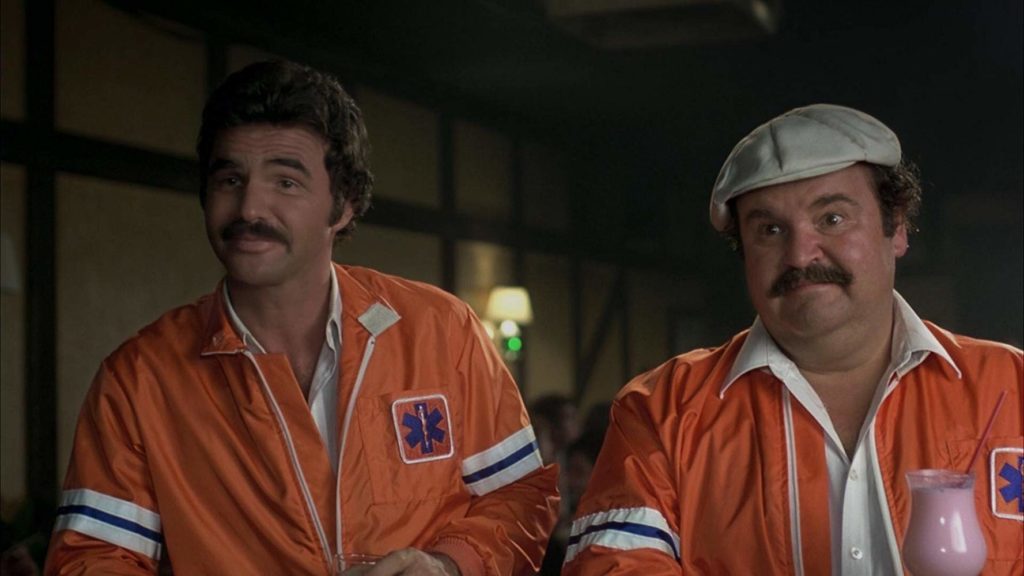
Reynolds and Dom DeLuise in THE CANNONBALL RUN (1981).
So what did Paul Thomas Anderson know that none of the rest of us could be bothered to see? He knew that besides simply being an icon of the 1970s, Burt Reynolds could act. He could strike with his presence, and cut with his looks. But, though David O. Russell’s American Hustle made his infamous nude Cosmopolitan centerfold the literal wall of the magazine’s fictionalized waiting room, reducing him to an image while simultaneously blowing him up, the more accurate impression of Reynolds circa 1972 was the promise he offered the silver screen following his impressively minimal turn in John Boorman’s Deliverance. Reynolds, besides being a fun cock-of-the-walk, was a real talent; an authentic movie star in his time. That he’s remembered primarily for Smokey and the Bandit, though… I have a hard time believing he’d ever regretted that. In the pantheon of 1970s car crash movies, his was right up at the top, running every blockade and driving Jackie Gleason crazy.
On a local classic rock radio station, a film critic friend, Carl Middleman, runs a movie guessing game. Every morning, some guy (the same guy) calls in an answers Smokey and the Bandit. It’s never correct, but maybe today it will be, and that guy can finally win some concert tickets. For him, Smokey and the Bandit is both persistent comedy gold and the answer to everything.
It’s true that Burt Reynolds had a lot of movie and TV work under his manly-man belt. But for so many of us, we’re happiest to find him east bound and down, and just to watch ol’ Bandit run.


